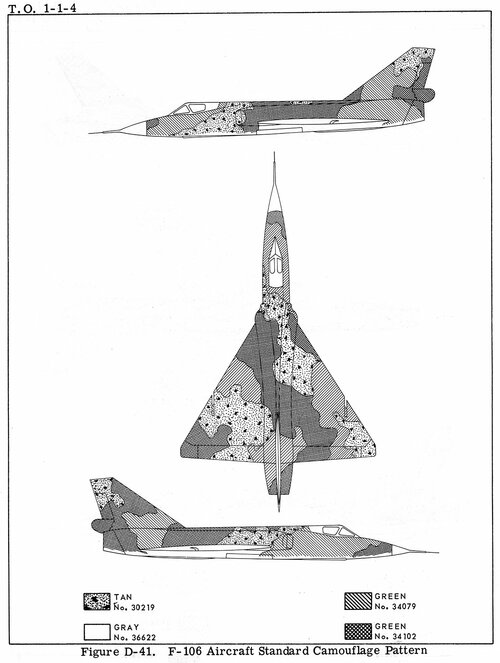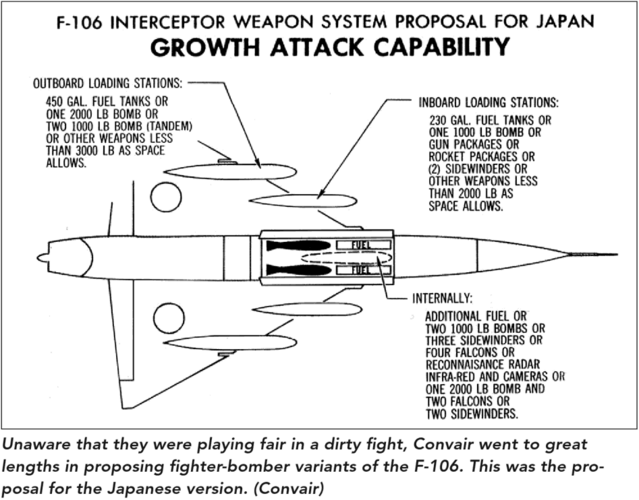Dilandu
I'm dissatisfied, which means, I exist.
Okay, I checked the sources. The F-106 could NOT use Sidewinder, even if refitted to carry them in weapon bays.How might Sidewinder armed F-106 "Six Shooters" (F-106s equipped with bubble canopies and Vulcan cannons) have performed during the Vietnam War? The F-106 had maneuverability on par with the F-4 Phantom II, being better in some situations and worse in others. It also carried an IRST system, which I'm not sure the F-4 carried. For purposes of this thread, we'll assume the "Six Shooters" are upgraded on a similar timetable as the USAF F-4s, gaining Sidewinders and Vulcans around the same time.
The reason is: the Falcon missiles, that F-106 was designed to use, were pre-programmed on target while still inside the plane. The MA-1 fire control system aligned their seekers with the plane's radar, so missile lockèd on and tracked the target while still inside the closed weapon bay. The weapon bay doors opened for just 2 seconds to lower the missile launcher rail into air stream & launch it.
The Sidewinder could not be used like that. It have no pre-programming ability. It must lock on target with its own seeker - which took some time. And, well, F-106 simply not designed to fly for a long time with opened weapon bay, waiting while Sidewinder seeker gain the target. The aerodynamic problens would became intolerable.
So no, F-106 could not be refitted tò use Sidewinder. AIM-4H would be much better alternative.






